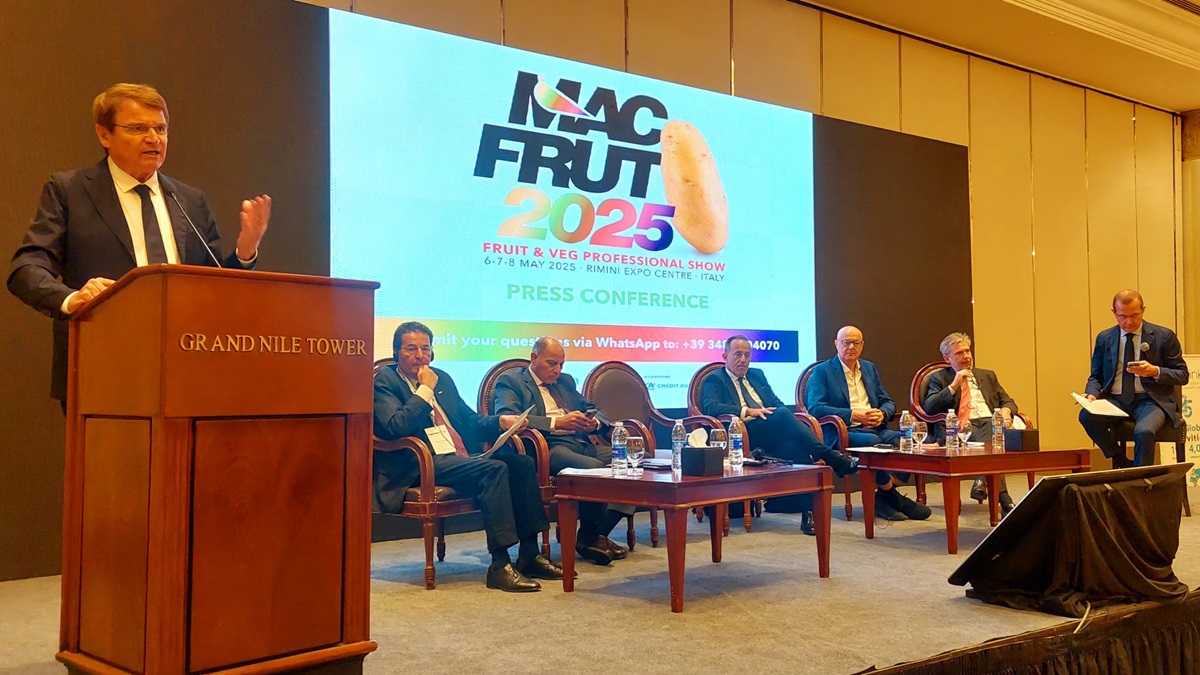Services
Macfrut 2022, a Smart Agriculture area with drones, robots and sensors
At Macfrut 2022, the international trade fair for the fresh produce industry organised by Cesena Fiera, to be held from 4 to 6 May 2022 at the Rimini Expo Centre, the spotlight will be on new technologies applied to agriculture 4.0, in the Smart Agriculture dynamic area. This exhibition area, which is the result of a collaboration between Ri.Nova, the research centre established by merging CRPV and Alimos, and Macfrut, will feature cutting-edge technologies in the field of sensors, drones and robots to demonstrate the link between innovation, environmental sustainability and economic sustainability when it comes to fruit and vegetable production.
11 April, 2022
At Macfrut 2022, the international trade fair for the fresh produce industry organised by Cesena Fiera, to be held from 4 to 6 May 2022 at the Rimini Expo Centre, the spotlight will be on new technologies applied to agriculture 4.0, in the Smart Agriculture dynamic area. This exhibition area, which is the result of a collaboration between Ri.Nova, the research centre established by merging CRPV and Alimos, and Macfrut, will feature cutting-edge technologies in the field of sensors, drones and robots to demonstrate the link between innovation, environmental sustainability and economic sustainability when it comes to fruit and vegetable production. According to FAO data, the agricultural sector will need to produce almost 50% more food, feed and biofuels in 2050 than it did in 2012. This is because, according to the latest United Nations (UN) projections, the Earths population is expected to reach 9.73 billion in less than 30 years. In this respect, agriculture 4.0 is one of the most effective tools we have to tackle this need. The European Parliament Committee on Agriculture and Rural Development has also stressed the fact that satisfying the demand for healthy food and optimal nutrition is one of the biggest challenges facing the world. Alvaro Crociani, Director of Ri.Nova, commented as follows: The entire agricultural sector is faced with unprecedented, highly complex challenges. In this regard, the Smart Agriculture project perfectly complements the specialist areas that we usually find at Macfrut. Thanks to the Farm to Fork strategy, the European Union also recognises the fact that new technologies have a key role to play in achieving a more sustainable agriculture: more precise and timely action, supply chain integration, and new operations have now become possible thanks to robotisation. These are the main tools that farmers will have at their disposal to tackle the daily challenges posed by climate change. Macfrut is therefore a great opportunity for participants to see these new solutions first-hand. The Smart Agriculture dynamic area will showcase a host of novelties. Sensors. Sensors designed for use in agriculture have rapidly evolved over the last few years: from agro-meteorological stations to more modern equipment such as soil probes, automatic traps, sensors and biosensors, which directly detect the condition of individual plants. Such equipment is set to play an increasingly central role in achieving the targets of reducing the use of chemicals set out in recent European policies. Drones. Technology is propelling drones to become the mobile sensors of the future, since they are capable of increasing the accuracy of monitoring instruments from the plot scale to individual plant scale, showing what satellites are unable to show with sufficient accuracy. But technology is also now making it easier for farmers to inspect crops thanks to virtual or augmented reality, especially when it comes to plant protection. Robots. The first valuable robotic applications for weeding, seeding and soil preparation are now also available on the market. Moreover, technology is progressing towards new types of equipment although still at prototype level for harvesting crops that cannot be harvested automatically using agricultural machinery. In fact, until recently, mechanical harvesting was exclusively used for industrial crops, but this will soon be possible also in the fresh produce sector. The energy supply of robots is gaining in importance in this field, due to rising energy and fuel costs; autonomous agricultural robots, which are capable of working slowly but steadily unlike manual human labour are a major step towards the electrification of agriculture, and towards the use of solar energy in particular.










